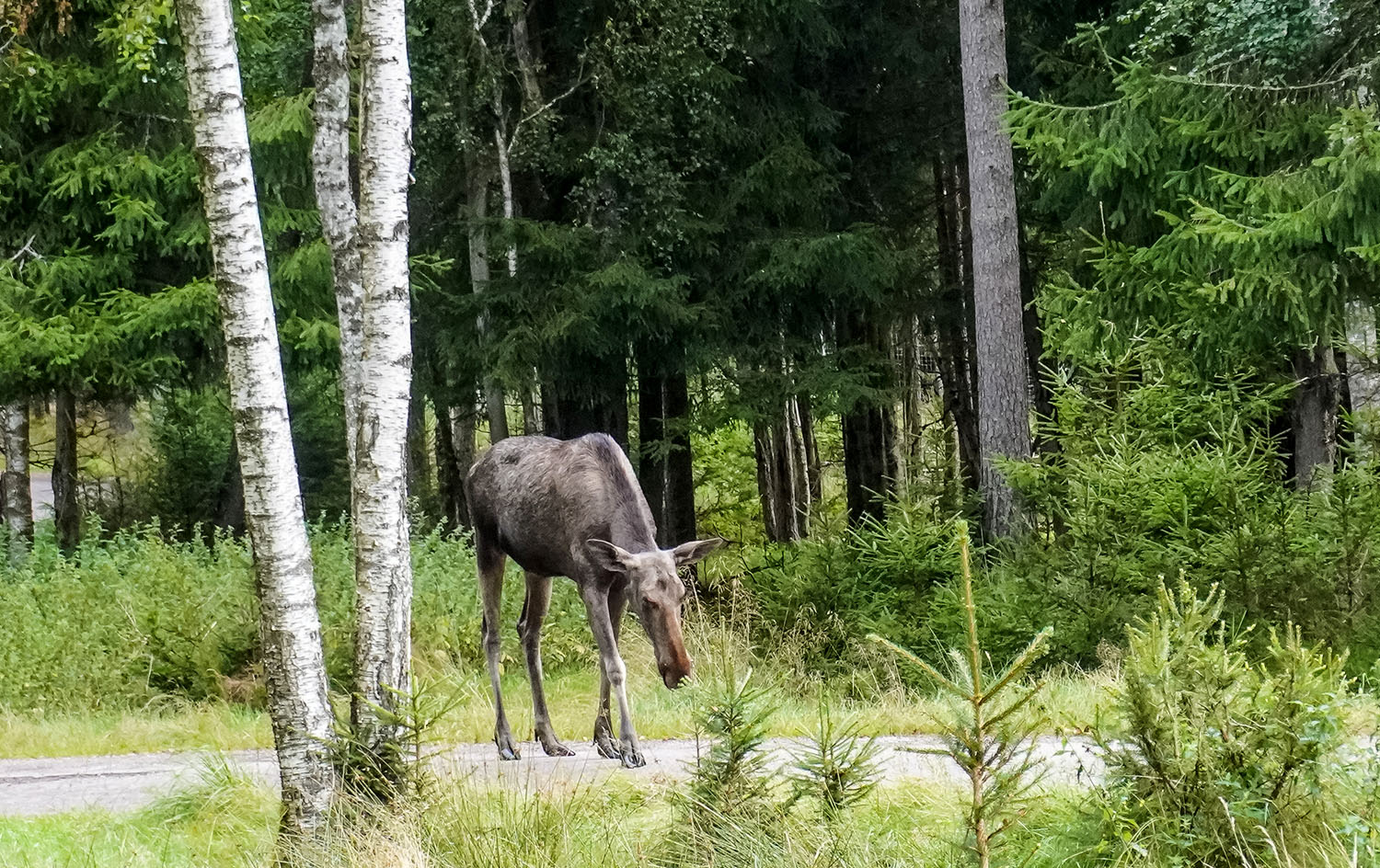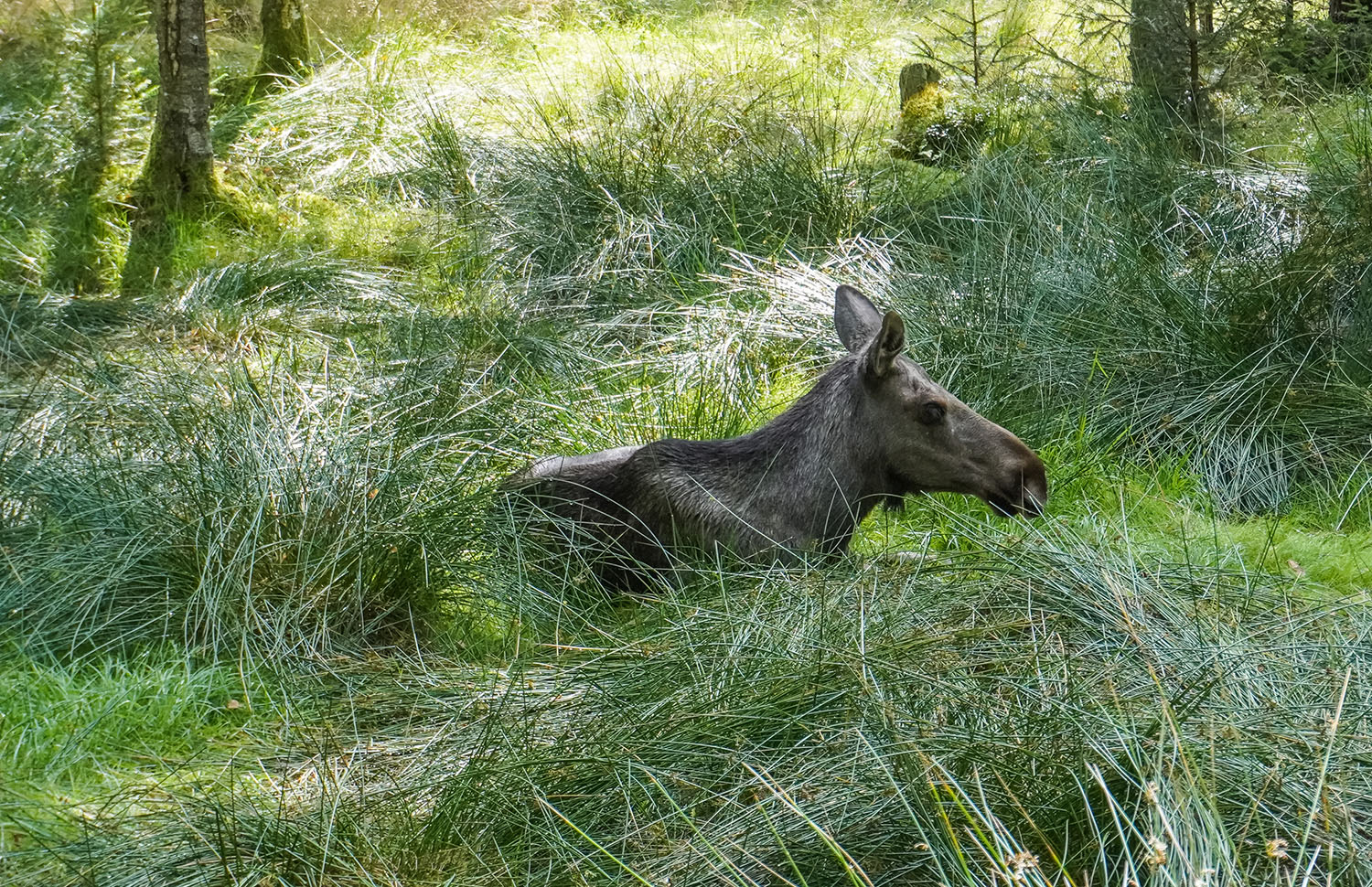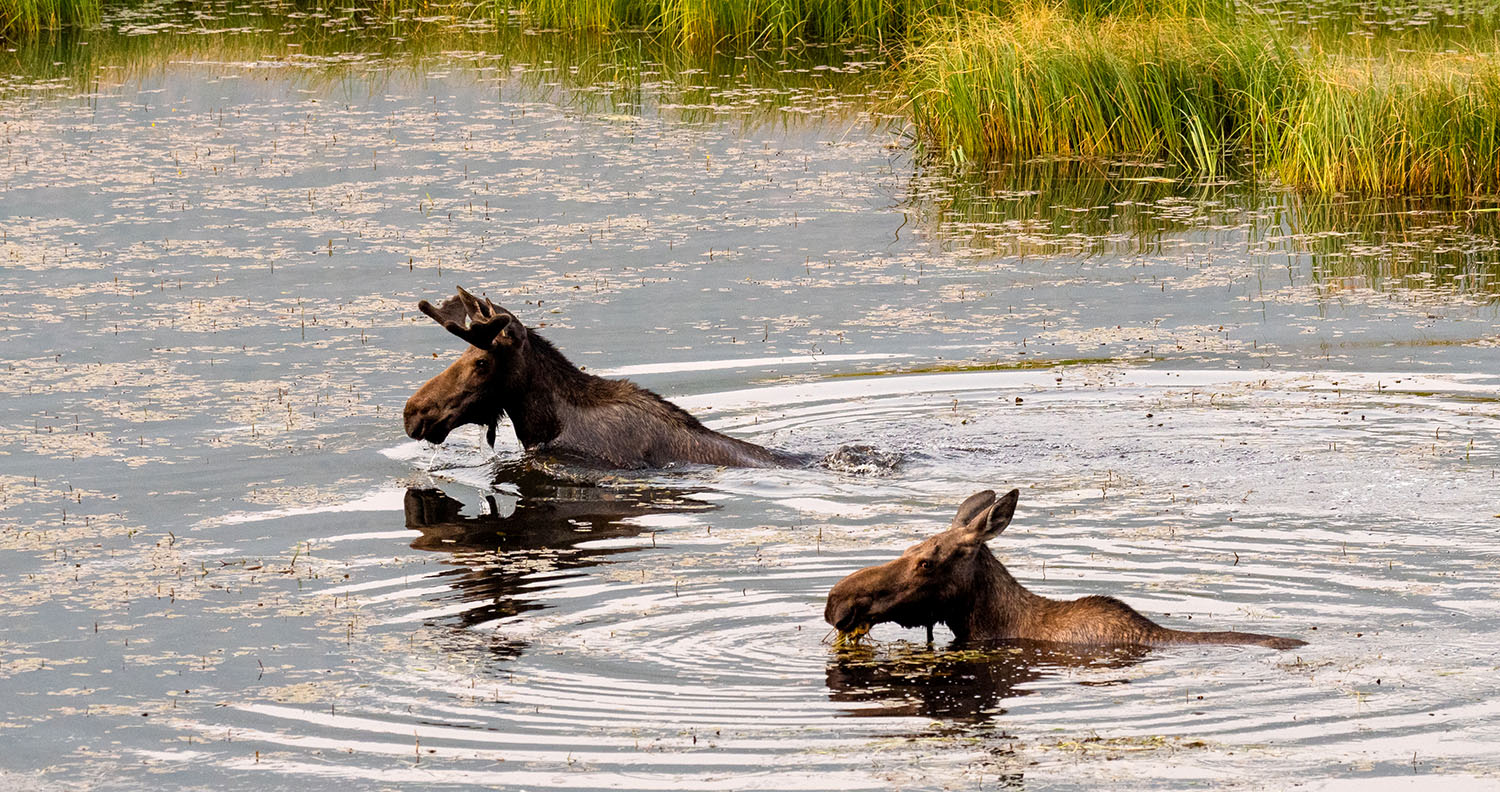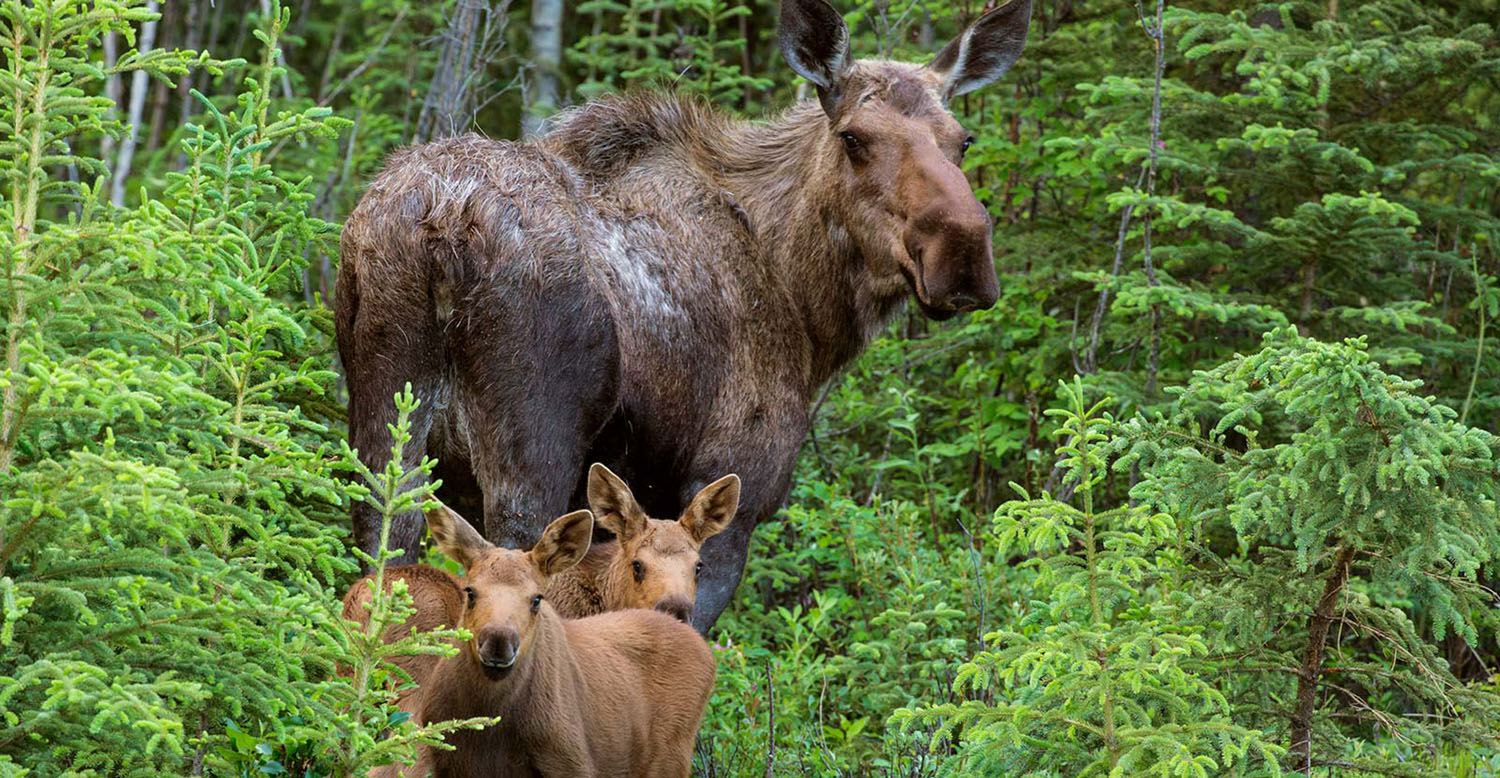Moose on the Move
Moose are unlikely TV stars. Yet a show about an annual moose migration attracts more viewers every year!

© Michal Fludra—NurPhoto/Reuters
A moose crosses a forest road during its yearly migration in Sweden.
Each year in April and May, a TV show has people in Sweden glued to their screens. The show doesn’t have a lot of action. It’s not funny or dramatic, either. Called The Great Moose Migration, the show follows a group of moose that are migrating from one part of Sweden to another.
The Great Moose Migration, which is shown on Swedish TV and on the Internet, follows moose on a journey the animals take every spring. Dozens of moose in northern Sweden swim across the Ångerman River to grazing pastures, where there are plants and berries for them to eat.
The show could be described as reality TV, but it’s actually a livestream. Cameras that have been posted along the moose migration path let viewers see moose, or any other animal, when they pass by.
The livestream is often called “slow TV” because it’s usually not very exciting. Sometimes nothing happens for hours. But many viewers stay tuned so they don’t miss a thing. They never know when they’ll spot a moose.
“I feel relaxed [watching the show], but at the same time I’m like, ‘Oh, there’s a moose. Oh, what if there’s a moose? I can’t [take a break]!’” 20-year-old William Garp Liljefors told the Associated Press.

© Michal Fludra—NurPhoto/Reuters
This moose has stopped to take a rest.
The Great Moose Migration has become increasingly popular. Over a million people watched in 2019, the show’s first year. Last year, there were more than 9 million viewers around the world.
Annette Hill, a professor at Jönköping University in Sweden, says people like slow TV because it’s similar to real life. The cameras show what’s really happening at any moment, even if there’s very little going on. It’s also relaxing to watch a quiet show.
“Nothing spectacular is happening,” Hill told the Associated Press. “But something very beautiful is happening in that minute-by-minute moment.”





